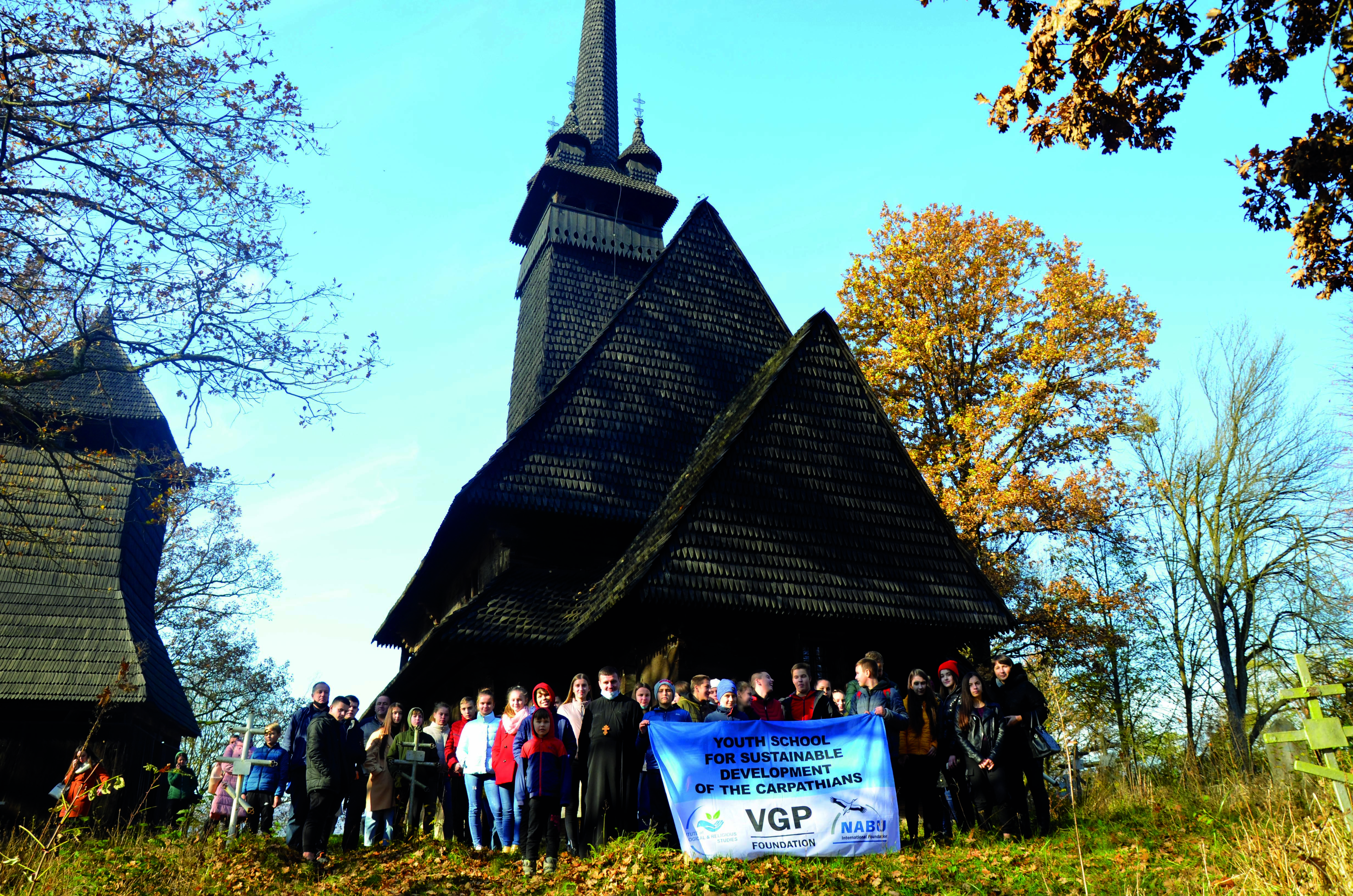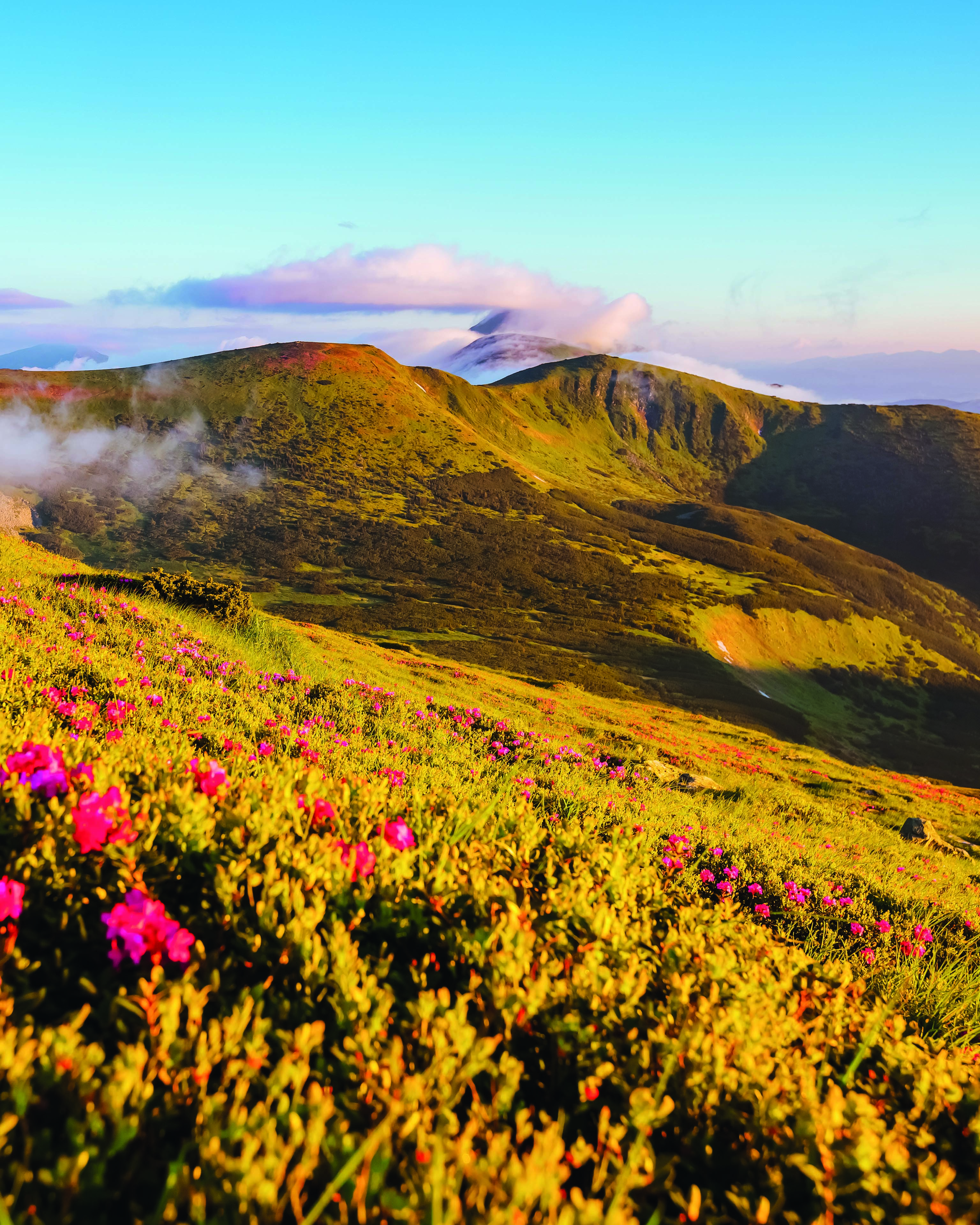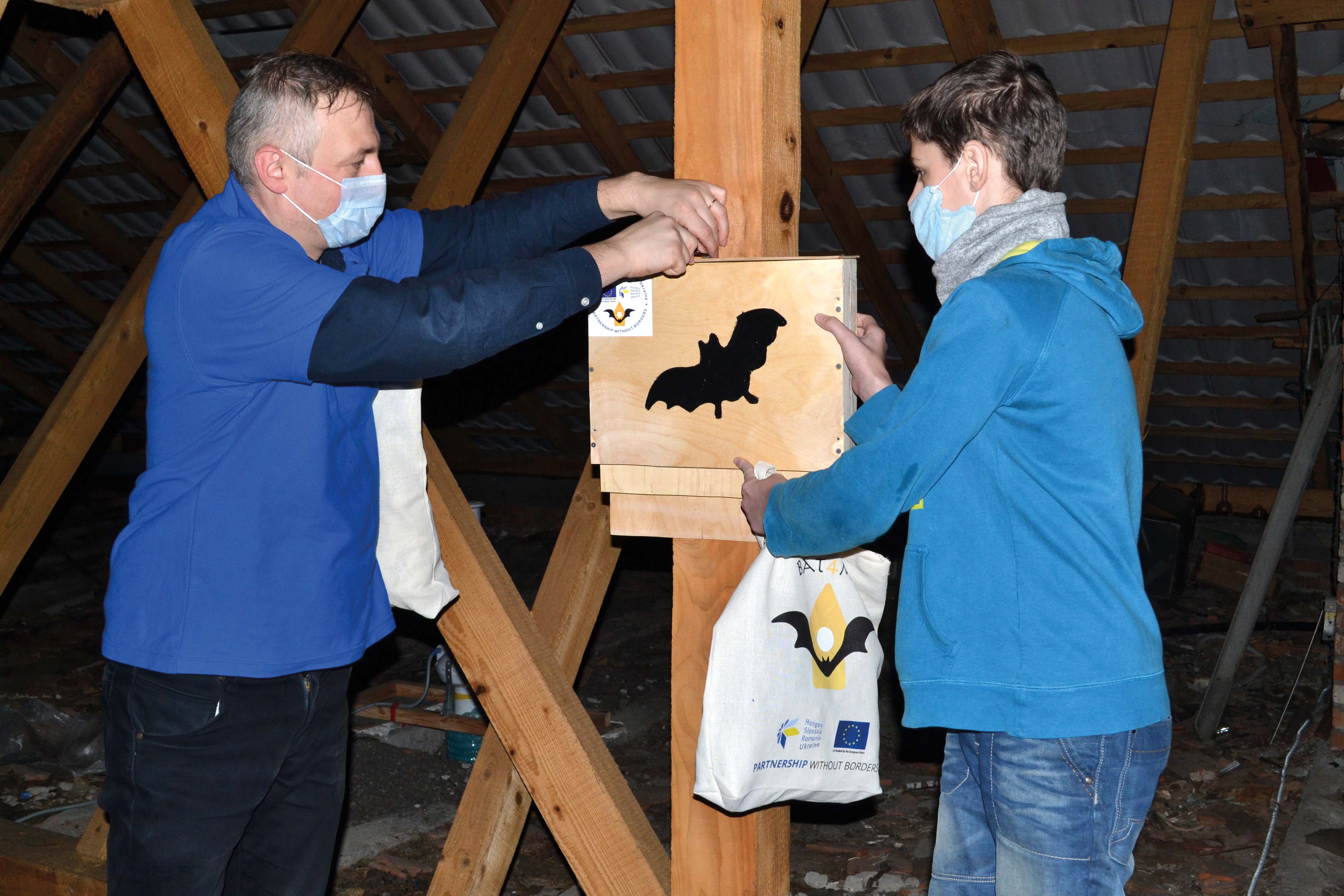The region comprises a primeval ecosystem of mountains and lush green forests filled with unique and untouched flora and fauna. The mountain range forms an arc through Central and Eastern Europe, stretching from the Czech Republic, Slovakia, and Poland through Hungary and Ukraine, also taking in large parts of Romania and Serbia in the south.
The region provides a habitat for the largest European populations of brown bears, wolves, lynxes, and other animal species and is home to well over one-third of all European plants. The region is also a source of life-sustaining water. The mountains collect, store, and gradually release vast amounts of rain and snow, and the region has an abundance of thermal and mineral water springs. The Carpathian region constitutes an important ecological, economic, cultural, tourist, and residential environment at the centre of Europe, shared by many peoples, countries, and ethnicities.
Essential for the entire European continent as the “Lung of Europe”, the Carpathian mountain and forest ecosystem features especially valuable areas of primeval forests that are designated as UNESCO World Heritage Sites. Second only to Russia, Romania, for example, is home to one of the largest surface areas of virgin forests in Europe. However, the Carpathians and their pristine forests are at risk, due to deforestation and illegal logging. Notably, in many of the post-Soviet era countries, the rule of law is weak and governments and businesses, but also individuals, have exploited the lack of stringent controls and conservation efforts. Even though large areas of the Carpathians are designated UNESCO World Heritage Sites, the region suffers from climate change, illegal poaching, environmentally harmful commercial projects, and an absence of waste management systems.
Given the region’s wide geographic spread across seven countries, the interdependent ecosystem presents a unique and complex challenge requiring a co-ordinated protection effort that considers broader regional goals but also local specifi cities. Another challenge lies in the fact that local communities, especially those in former Soviet states, are traditionally accustomed to exploiting the forests and may have only vague ideas about nature conservation. To preserve the unique forests of the region, local communities need to be educated to better understand the impacts of their behaviours and to be shown practical examples of activities they can undertake to support their own sustainable development as well as preserve the unique flora and fauna.
Focusing on the protected, primeval forests of Romania and Ukraine, the German Conservation Society (NABU) has partnered with local organisations to advance the education of local communities. The conservation efforts focus on involving and educating young people, transforming them into ambassadors for the protection of these delicate ecosystems.

The VGP Foundation has been supporting NABU’s conservation eff orts in the region since October 2020. The priority in this project is systematic work with the youth of settlements across Transcarpathia, with the aim to increase the level of awareness among children and young people in biodiversity conservation and pristine forests ecosystems. Ultimately, the goal is to prepare responsible adults in the interest of – and with an interest in – nature protection within the Carpathian region.
A key component of the educational program is that children and youth not only have access to theoretical knowledge on environmental protection, but also that they be involved in practical activities interacting with nature. This gives them a sense of responsibility and better understanding of their roles and impacts on the environment. To maximise the impacts of youth and school projects, NABU, the VGP Foundation, and the project partners are also co-operating with local NGOs, experts, teachers, and religious communities. The churches and clergy in the region are highly regarded among believers and the secular population alike, and they serve as strong and influential local multipliers. Additionally, the churches provide activities focused on the implementation of environmental topics for Sunday schools at the parish and local level. The project makes use of the opportunities for local and religious communities to collaborate with civic and environmental activists to achieve common environmental goals and mobilise joint efforts.
Several initiatives and smaller projects have been started and completed to date. In Romania, schoolchildren developed a three-dimensional map of the surrounding forests to learn more about local areas and to identify related landmarks as a part of a broader educational series. Children also participated in a contest between classrooms at a local school, the prize being an excursion into the Sinca Veche Pristine Forest. Further campaigns and educational materials have been developed, including campaign posters as well as wooden and ecological church calendars in co-operation with local churches.
To maximise the impact of the youth school project, NABU, the VGP Foundation, and the project partners are also co-operating with local NGOs, experts, teachers, and religious communities.

In Ukraine, thematic sessions were developed to foster critical thinking in the search for environmental solutions. Classes were held for children on forest and water birds, where the deeply curious youth were able to learn new things about the world of birds but also understand how winter periods affect the lives of animals in the forests. An ecological fairy tale on bat biodiversity for children was also developed. The protection of bats living in the surrounding forests has become increasingly important, not least because of the COVID-19 pandemic and the rise of rumours and prejudices about bats’ involvement in the pandemic. Alongside the VGP Foundation’s goal to support nature conservation, another key priority of the Foundation is the protection of cultural heritage: In the Ukrainian Carpathians stands a group of wooden Orthodox and Eastern Catholic churches that are inscribed on the UNESCO World Heritage List. Built of horizontal wooden logs between the 16th and 19th centuries, the churches bear testimony to a distinct building tradition rooted in Orthodox design and local tradition. These wooden churches are an integral component of the natural landscapes in the Carpathians. Programmes enabled children to talk about protecting the unique nature surrounding the churches, as well as about the protection of their unique cultural heritage.
Given the ethnic diversity and rich cultural heritage of the inhabitants of the Carpathians, the projects make sure to consider and include local traditions and characteristics of these multicultural groups. Events are planned with diff erent ethnic groups: Hungarians, Slovaks, Roma, and Swabians. The involvement of children from diff erent ethnic groups and cultures in the youth school classes emphasises the universal nature of environmental values and contributes to social cohesion of the local population. In the Ukrainian village of Ivanivtsi, for example, a campaign on responsible waste management was undertaken with youth from the local Roma community.
In future, the youth school projects may become more international, encompassing even broader educational activities for the inhabitants throughout the region using the lessons learned and developed during the ongoing projects. Encouragingly, the bishops of the Greek Catholic and Roman Catholic churches of Ukraine and Hungary have initiated creation of an Interconfessional Council for the Protection of the Carpathians. Establishment of the Council shows that the churches, together with NGOs and environmental experts, can and want to contribute to protecting the environment in their local and regional communities. In developing new enthusiasm for the protection of some of Europe’s most untouched forests and mountains, the Carpathians can gain a new generation of ambassadors in training that will fight for the protection of their delicate ecosystems and the preservation of their unique wilderness.
Of ancient oaks, bat guano, and natural soap
For a sustainable future, human beings, elements of their material culture, and nature must co-exist.
Children (and some adults, too) in Western Ukraine’s Zakarpattia Province are learning this lesson in very practical ways. For example, they are recognising that the belfries of their communities’ ancient wooden churches frequently provide homes to colonies of bats. The bats have been hanging in the centuries-old churches for decades, and their droppings have accumulated in some of these spaces over the years. In the interest of co-existence, youth are participating in cleaning out the bat “guano” from some of these churches. They also are building bat houses that can provide these flying mammals with alternative homes and, of course, they are learning about the importance of these sometime maligned creatures in nature. The bat initiative is just one of numerous activities conducted as part of the Carpathian Youth School for Sustainable Development project being implemented by the Institute for Environmental and Religious Studies (IERS, based in Uzhgorod, Ukraine) in partnership with the German Nature Conservation Union (NABU) and with financial support of the VGP Foundation. The project in the Ukrainian Carpathians also encourages youth to think about, and even devise, potential projects that can address local environmental issues through community action. In autumn 2020, for example, a team from IERS organised an information day in the village of Kraynikovo to jointly consider how to preserve the community’s ancient oak trees. Building upon local people’s ideas, participants formulated 10 proposals for saving the oaks.

Some of these ancient trees stand dangerously close to the village’s 17th century wooden Church of St. Michael and are in poor condition. In May 2021, a team of professional arborists began work to stabilise and preserve the trees.
On another day in May, IERS held a workshop in the village of Mala Roztoka, where children participated in a workshop to make natural soap that was scented and coloured with nature’s ingredients. “Today you will make soap that is not only good for the body but also for the environment,” the children were told before setting to work by Mykhailo Bilanych, a biologist and organiser of ecology education programmes at IERS. “All the ingredients were given to us by nature, but it’s worth remembering that if we want to continue to receive such gifts we must preserve it.”
VGP Foundation projects
The Youth School for Sustainable Development of the Carpathians project in Ukraine runs from 1 October 2020 to 30 September 2021. The VGP Foundation is also supporting the Pristine Forests for Future Generations project in Romania over the same period. The local partners for that project are the Șinca Veche Forest District and Piatra Craiului National Park. The aim of the Pristine Forests project is to build awareness among children and youth about biodiversity conservation and pristine forests ecosystems that provide critical environmental services to society.
